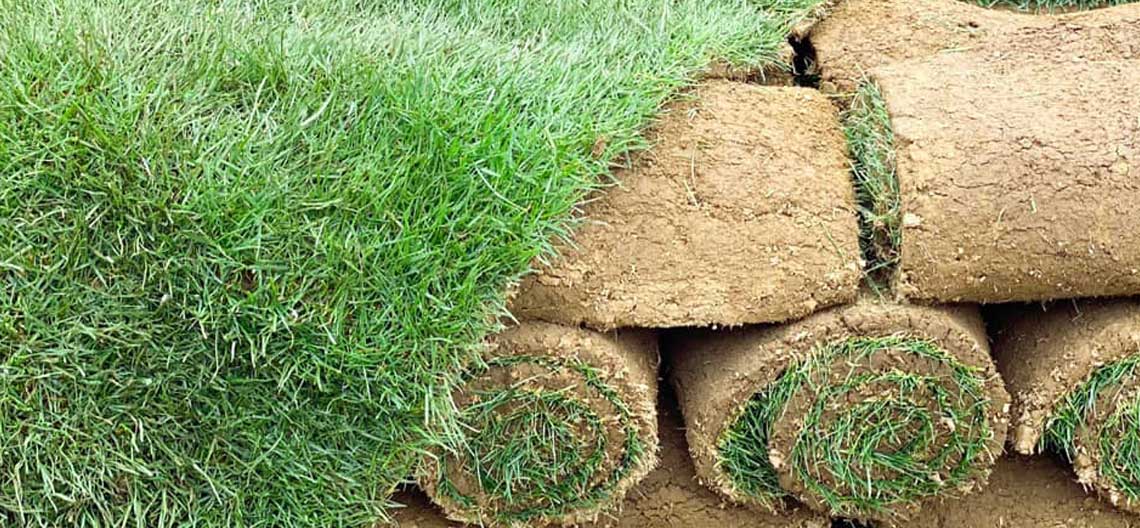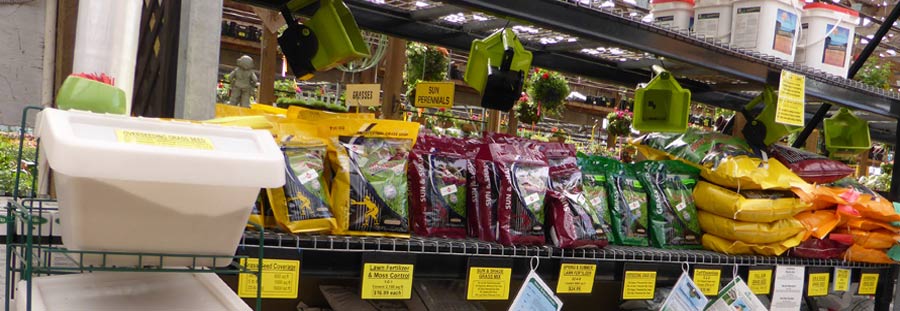
Port Kells Nurseries has a complete line of grass seed blends for various areas of your yard.
Our grass seed can be purchased by the bag or in bulk.

For success with your seeding. Please follow the instructions for soil preparation at the bottom of this page.
Frequently asked questions about our grass seed.
Turf / Sod

We carry locally grown fresh sod.
Each roll measures 2 feet wide x 4 feet long.
Cost $7.99 per roll.
Purchase 50 or more $6.99 a roll.
For success with your sod. Please follow the instructions for the preparation and the laying of sod listed below.
Note: Turf is highly perishable. If you do not plan on installing the turf until the next day, we highly recommend that you unroll it and place it in the shade. If possible, water it. Not doing so could cause it to turn yellow.
You can pick up or have us deliver the sod right to your home. We will also provide you with the use of a lawn roller at no extra charge.
Use our sod calculator to determine the approximate number of rolls needed.
Please enter measurements in feet.
Add 5 – 10% for cutting / waste
Frequently asked questions about our turf/sod and lawns.
Site Preparation and Installation for seed or sod
- Measure off the area and figure the square footage (length x width).
- Rough grade the entire area. This will eliminate any drainage problems on the property. This would include sloping the grade away from building foundations, eliminating or reducing severe slopes and filling low–lying areas. A tractor mounted blade and or box are most often used for rough grading, but if the area is smaller, it can be done with hand tools. Rake and remove any debris.
- Till the area to a depth of at least 5 cm (2 inches) and remove all debris, stone, roots, and weeds – which could possibly interfere with the development of the grass seed.
- Add top soil to achieve a total top soil depth of 10-15cm (4-6 inches), after firming. The topsoil should be a loamy sand, sandy loam, clay loam, sandy clay loam or other soil suitable for the area. To the extent possible, practical, affordable and available, incorporate humus (fully decomposed organic matter) into the topsoil.
- Finish grade the entire site, maintaining the rough grading contours and slopes, with a tractor-mounted box blade on large areas or a heavy duty rake on smaller sites.
- Roll the area with a lawn roller approximately ¾ full of water. This firms and settles the surface and reveals any low spots that should be filled. If time permits, allow the area to settle further with rainfall or by applying irrigation.
- Apply starter fertilizer that is high in phosphate at a rate recommended for that particular product.
- The site is now ready for turf/sod or seed. With this degree of careful and thoughtful soil preparation, the resulting lawn will be absolutely beautiful and require less maintenance, smaller quantities of applied water, fertilizer and pesticides, as it maintains a high degree of density and uniformity and recovers much more rapidly from wear. For years to come, your investment in soil preparations will yield a high return.
Sod Laying Instructions
- Start laying sod in a straight line ensuring each piece is firmly abutted to its neighbor.
- Stagger each new row to ensure the connecting area do not form a straight line.
- Once you have completed laying all the sod, use a lawn roller (we offer a free one day rental) to ensure firm contact between the soil and sod roots.
- Water the lawn regularly and deeply. Daily for new plantings, less often as the sod matures and begins to establish itself.
- Do not mow the lawn for at least 3-4 weeks.
- Apply fertilizer during the growing seasons, fall and spring. Newly established sod can benefit from starter fertilizer.

